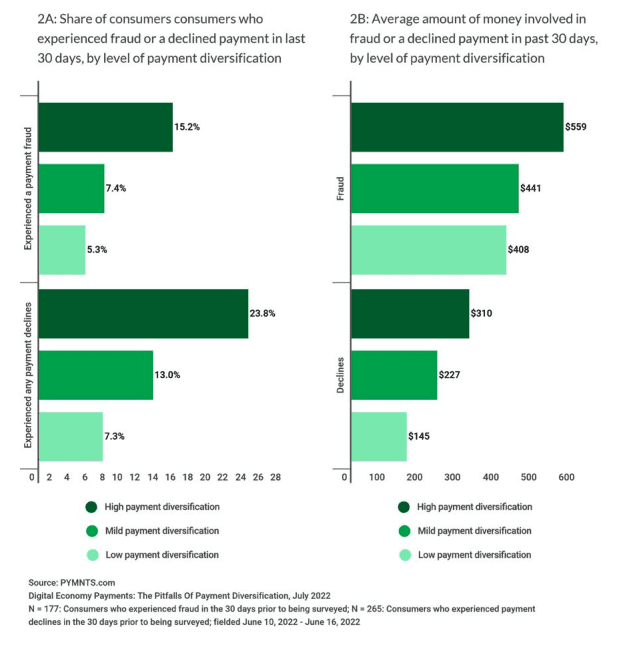The Data Point: Declines Dog 24% of Consumers With High Payments Diversification
Not content to hit 8.6% in May, the Consumer Price Index (CPI) shifted to up to 9.1% in June, making consumers conflicted enough about inflation and spending even more so.
Add to this aggravation the new finding that the more payments choice one employs, the greater potential declines one’s likely to face.
Surveying nearly 2,800 U.S. consumers for the July report “Digital Economy Payments July 2022 U.S. Edition: The Pitfalls of Payment Diversification,” among other revealing findings on digital spending trends, PYMNTS found that consumers with high payments diversification — defined as using three or more methods regularly — get declined more often at checkout.
On one level, that’s to be expected. The more types and transactions used, the more likely a consumer is to be flagged by some merchant’s fraud detection at some point.
But the data also points to another problem. Having too many payment methods is making it more difficult for many consumers to keep track of their transactions — both to guard against illegal activity and to ensure they have enough money on hand to cover a given transaction.
Get the report: The Pitfalls of Payment Diversification

- Twenty-four percent of highly diversified consumers had at least one attempted payment declined.
Noting that 15% of consumers who highly diversify their payment methods were victims of fraud this past month, the study stated that “24% of highly diversified consumers had at least one attempted payment declined. This is an increase from last month, when 13% of these consumers experienced fraud and 21% experienced payment declines, indicating that both are trending upward. These consumers were almost exactly three times more likely than respondents with lower payment diversification to be victims of fraud in June.”
The next most common reason for a declined payment was suspicious activity.
“PYMNTS’ data reveals that highly diversified consumers were more likely than average to blame suspicious activity for recent payment declines, at 33% versus 23%,” the study stated.
See it now: The Pitfalls of Payment Diversification
